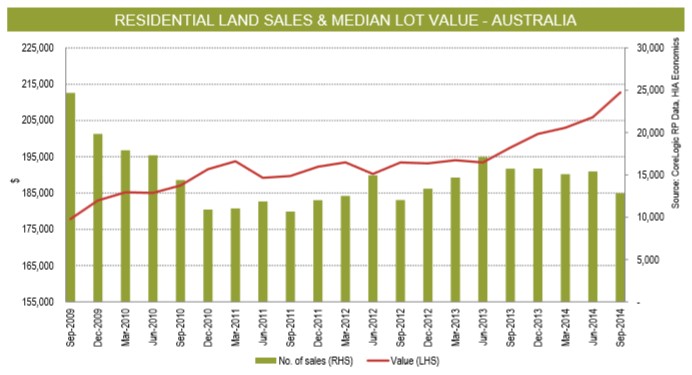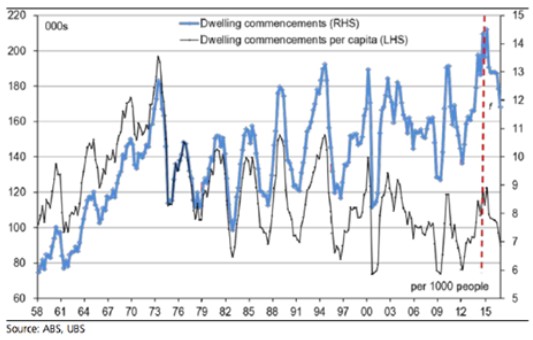Lindsay Partridge, the CEO of Building supplier Brickworks, has today echoed CSR’s warning that shortages of developable land are preventing a bigger construction uplift and helping to reduce housing affordability. From The AFR:
“Despite surging demand, Sydney still has the lowest number of lots being released for housing development of all major capitals. This is rapidly pushing up [home] prices and reducing the average lot size,” he said.
“There has been good progress in New South Wales to increase the release of land, but more land is required quickly. What we need are cheaper and larger lots that are readily available.”
Partridge has a point. But land supply is not just a problem in New South Wales, but nationally, as illustrated by the HIA’s latest land sales report. This report revealed that median vacant lot price across Australia hit a record $212,727 as at September 2014 just as turnover (supply) in the national land market declined by 16.7% over the quarter, in spite of strong underlying demand (see next chart).

Meanwhile, dwelling commencements have been in trend decline for decades – a trend that has been exacerbated since the late-1990s (see next UBS chart).

How a country with such an immense land mass could engineer a land shortage is the hallmark of idiotic housing policy, and must be addressed, particularly in light of the population ponzi being run by the federal government.
Of course, there are also strong reasons to unwind demand-side distortions that have inflated house prices, such as tax lurks (e.g. negative gearing and the CGT discount on investment homes), banning the ability of SMSFs to leverage into property, and restoring past capital weights on residential lending.
Even in the absence of supply-side reforms, action in these areas would significantly improve housing affordability.
That said, the best policy response is to implement reforms to both sides of the housing market concurrently.

